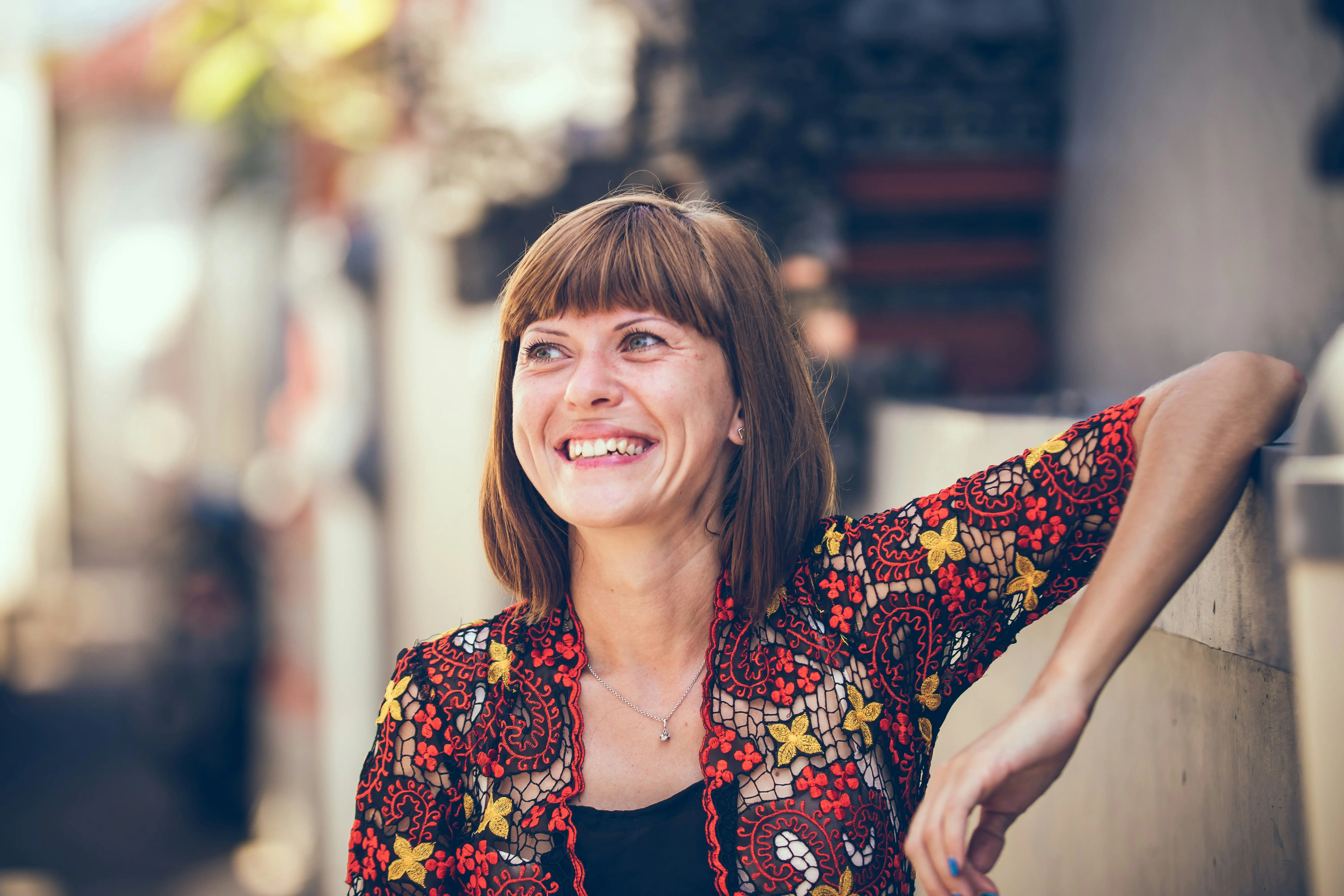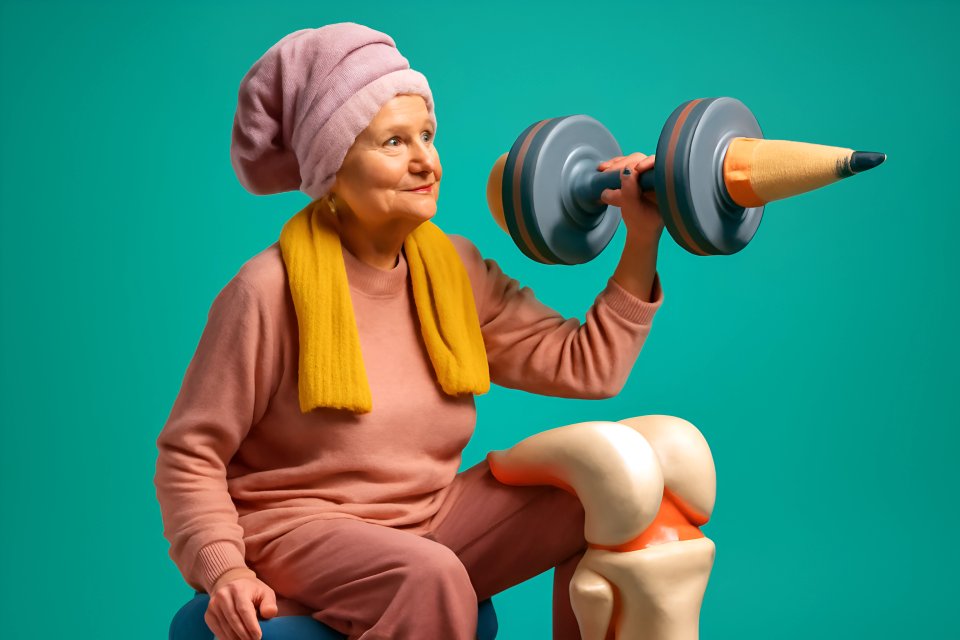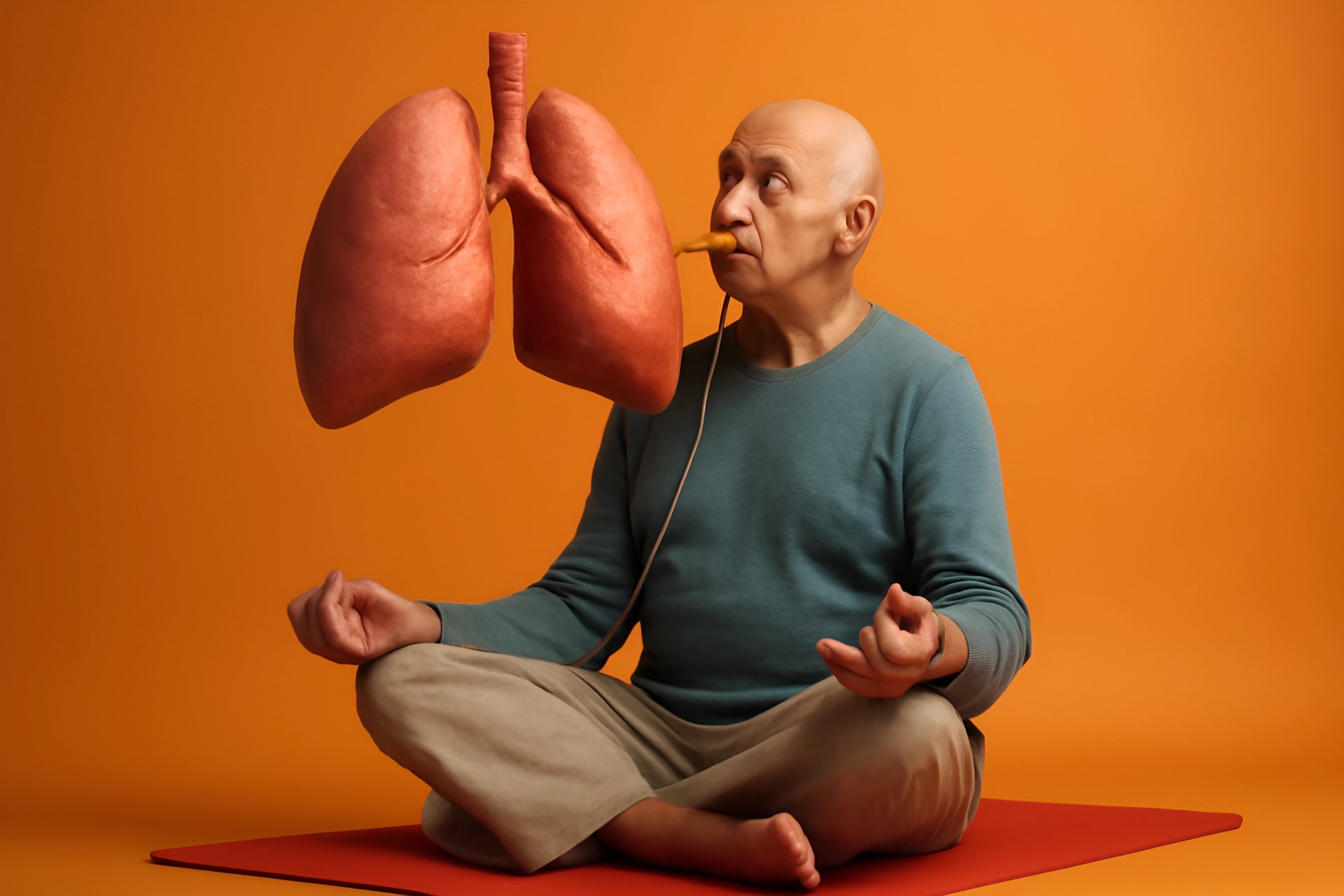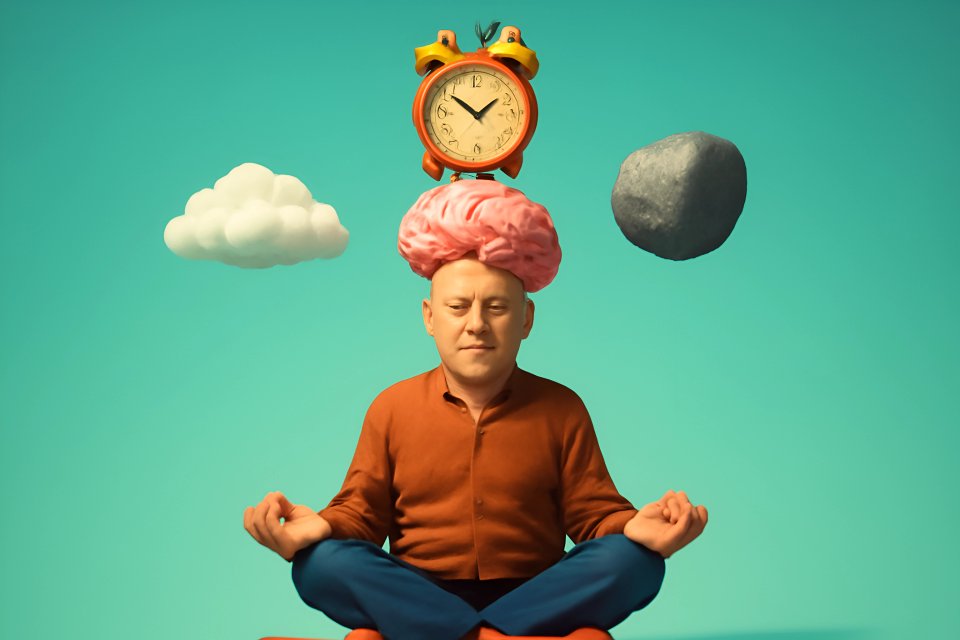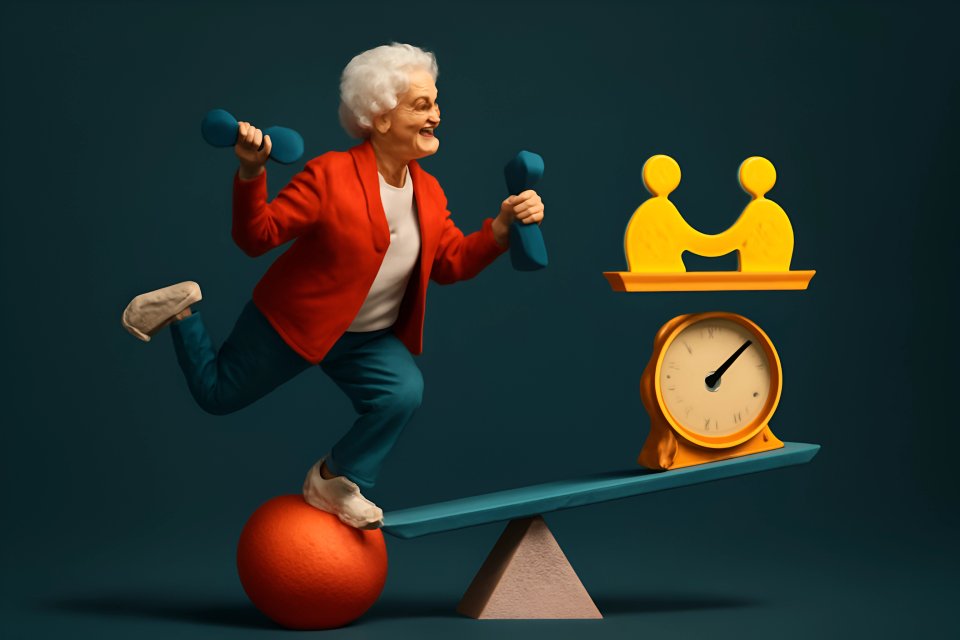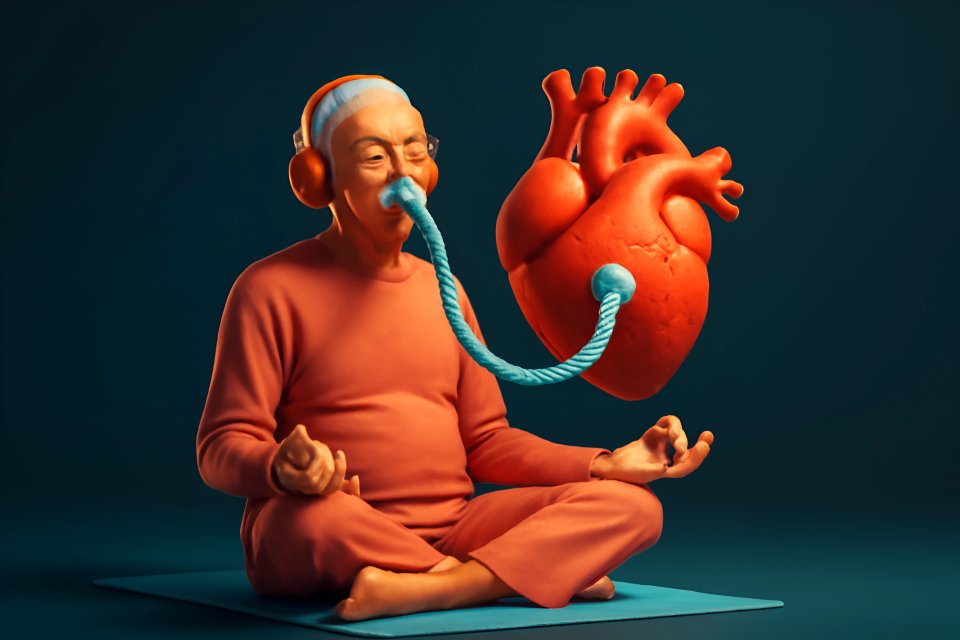
Introduction: Finding Your Calm in a Fast-Paced World
Does the constant stream of news, the pressure to keep up, or worries about the future sometimes feel overwhelming? You are not alone. Anxiety is a real and valid experience, especially during the significant life transitions that come after 50, and it can steal your peace and your power.
But what if you had a tool to quiet the noise? A simple, science-backed skill to train your attention, find your footing in the present moment, and reclaim your sense of security. This is the promise of mindfulness—not a complex spiritual practice, but a practical way to manage the mind's relentless chatter.
In this article, we'll walk you through gentle, practical mindfulness techniques designed specifically for managing anxiety over 50. There are no complicated poses, no demands to completely clear your mind—just simple, powerful steps to help you feel more grounded, in control, and ready to live this chapter with confidence.
Why Anxiety Can Feel Different After 50
Let's be honest: the worries you face today aren't the same as the ones you had at 25. The landscape of life changes, and with it, the nature of our anxiety. Retirement might not feel like the finish line you imagined, but a confusing new beginning. The kids are grown, the house is quiet, and you're left navigating a new sense of identity that can feel both liberating and unsettling.
On top of these major life transitions, there are the undeniable physical realities of aging. New health concerns can crop up, creating a low-level hum of worry about the future. A recent study in BMC Geriatrics found that mindfulness programs are highly effective at helping seniors manage these exact feelings, showing significant reductions in both immediate and long-term anxiety. This confirms that what you're feeling is common, and more importantly, that there are proven ways to find relief.
It’s not just personal changes; the world itself feels faster and more demanding than ever. The 24/7 news cycle and the pressure to keep up with ever-changing technology can feel like a constant assault on your peace. But at FitOverFifty, we see this not as a decline, but as a new chapter that simply requires a new set of tools for mental wellness. You have the wisdom and experience; now it's time to add the skill of mindfulness to your arsenal for a truly vibrant life.
5 Simple Mindfulness Techniques for Anxiety in Seniors
1. The Anchor Breath: Your 3-Minute Reset
When anxiety strikes, it can feel like you’re adrift in a storm. The Anchor Breath is your lifeline—a simple, powerful tool you can use anywhere, anytime, to pull yourself back to solid ground. Think of it as your personal 3-minute reset button.
The beauty of this practice is its simplicity. Find a comfortable seat in a chair, at your desk, or even in a parked car. Gently close your eyes or just lower your gaze to soften your focus. Place one hand on your belly, and simply notice the gentle rise and fall with each breath.
Now, let’s add a rhythm. Breathe in slowly through your nose for a count of four, feeling your belly expand. Hold that breath gently for a count of two. Then, exhale slowly through your mouth for a count of six, feeling your belly soften. Repeat this for just one to three minutes, focusing only on the physical sensation of the breath. This isn't about stopping your thoughts; it's about giving your mind a calm, steady anchor to hold onto.
2. Guided Meditation: Let Someone Else Do the Work
Does the word "meditation" make you think of sitting cross-legged on the floor for an hour in perfect silence? Let's bust that myth right now. You don't have to do this alone, and you certainly don't need to force your mind to be empty. Guided meditation is the perfect entry point because, as the name implies, someone else does the heavy lifting for you.
A guided meditation is simply an audio track where a calm voice walks you through the process, giving you gentle instructions on where to place your attention. This makes it incredibly easy to stay focused and bypass the feeling of "am I doing this right?" Research from UC Berkeley's Greater Good Science Center highlights that mindfulness can improve mental health and cognitive function in older adults, with guided meditations being a particularly effective and accessible method.
Getting started is easier than ever. You can find thousands of free, high-quality guided meditations on YouTube by searching for "5-minute guided meditation for anxiety." Apps like Calm and Headspace also offer excellent introductory sessions, giving you a simple, structured way to build a practice that fits your life and provides a much-needed sense of peace and control.
3. The Mindful Body Scan: Reconnecting with Yourself
Anxiety doesn't just live in your head; it often shows up in your body as tense shoulders, a tight jaw, or a clenched stomach. The Mindful Body Scan is a technique designed to gently rebuild the connection between your mind and body, helping you notice and release this stored tension without judgment. It’s a powerful way to check in with yourself and offer a little bit of care.
To begin, find a comfortable position, either lying down on a bed or a yoga mat, or sitting in a supportive chair. Close your eyes and bring your attention all the way down to your toes. Without trying to change anything, simply notice any sensations you feel: warmth, coolness, tingling, pressure, or maybe nothing at all.
Slowly, as if you're moving a gentle spotlight of awareness, guide your attention up through your body. Move from your toes to your feet, your ankles, your calves, and continue all the way up to the crown of your head. Spend a few moments on each part, just noticing. A comprehensive 2015 NIH review confirmed that mindfulness practices like this can significantly reduce anxiety, depression, stress, and pain acceptance, making the body scan an essential tool for both mental and physical relief.
4. Mindful Moments: Weaving Calm into Your Day
One of the biggest misconceptions about mindfulness is that it’s something you have to set aside special time for. The real power comes when you learn to weave these moments of awareness into the fabric of your everyday life. This is where you transform mindfulness from a practice into a way of being, creating small pockets of peace throughout your day.
Think about your morning coffee or tea. Instead of drinking it while scrolling through the news, take one minute to practice mindful sipping. Pay full attention to the aroma rising from the cup, the warmth in your hands, and the rich taste with each sip. When you take your daily walk, turn it into a mindful walk by feeling the sensation of your feet hitting the pavement and noticing the sights and sounds around you without labeling them as "good" or "bad."
This approach is about turning mundane activities into opportunities for calm. You can practice mindful listening by putting on a favorite piece of music and doing nothing else but listening to the notes. By integrating these small acts of presence, you are actively training your brain to return to the present moment, which is the foundation of a less anxious life. For more ideas, explore our guide to mindful daily routines for increased energy over fifty.
5. The "Worry & Gratitude" Journal
Sometimes, anxious thoughts can feel like they’re swirling in a chaotic loop inside your head. A structured journaling practice can be an incredibly effective way to get them out, examine them, and intentionally shift your focus toward something more positive. This isn't just writing; it's a strategic exercise for your mind.
Start by setting a timer for five minutes for a "Worry Dump." On a blank piece of paper, write down every single thing you're anxious about, big or small. Don't censor yourself or worry about grammar; the goal is simply to get it out of your head and onto the page, reducing its power over you.
Next, turn to a fresh page and set another five-minute timer for a "Gratitude Shift." List three to five things you are genuinely grateful for in this moment. They can be as simple as the comfortable chair you're sitting in, a kind word from a friend, or the taste of your lunch. This simple act helps retrain your brain to scan for positives, building the mental resilience you need for practical mindset shifts for healthy aging.
Overcoming Common Hurdles: "But I Can't Clear My Mind!"
As you begin, you might run into a few mental roadblocks. The most common one is the belief that you're failing if you can't achieve a perfectly silent, empty mind. Let's be clear: the goal of mindfulness is not to stop your thoughts. That's impossible. The real practice is simply noticing when your mind has wandered and gently, without judgment, guiding it back to your anchor, whether that's your breath, your body, or the sound of a guided meditation.
Another common hurdle is the feeling that you "don't have time." But you don't need an hour a day to see benefits. Start with just three to five minutes. The key is consistency, not duration. A 2014 NIH study on older adults found that a standard, manageable program was a highly evidence-based approach to managing anxiety, with most participants continuing the practices long-term because they saw real results.
Finally, some people feel that taking time for mindfulness is silly or selfish. Reframe this immediately. You wouldn't call brushing your teeth or going for a walk selfish; they are acts of essential maintenance. Think of mindfulness in the same way—it is vital mental hygiene that allows you to show up as a calmer, more present, and more resilient person for yourself and for everyone you love.
Building Your Mindful Routine: A Simple Start Guide
Getting started is often the hardest part, so let's make it as simple as possible. Instead of trying to do everything at once, follow this clear, non-intimidating plan to build a sustainable routine. Remember, consistency beats intensity every time.
The first step is to simply pick one technique from the list above that sounds the most appealing or accessible to you right now. Don't overthink it. Whether it's the Anchor Breath or a guided meditation, just choose one to focus on for the next week.
Next, link your new tiny habit to something you already do every single day. This is a powerful technique called "habit stacking." For example, you could commit to practicing your chosen technique for five minutes immediately after you brush your teeth in the morning or right before you pour your first cup of coffee. This creates an automatic trigger, making it much harder to forget.
Here is a simple plan to get you started:
| Day | Action | Duration | Habit Stack Trigger |
|---|---|---|---|
| Day 1 | Choose one technique (e.g., Anchor Breath) | 5 Minutes | After brushing teeth in the AM |
| Day 2 | Practice the same technique | 5 Minutes | After brushing teeth in the AM |
| Day 3 | Practice the same technique | 5 Minutes | After brushing teeth in the AM |
| Day 4 | Practice the same technique | 5 Minutes | After brushing teeth in the AM |
| Day 5 | Practice the same technique | 5 Minutes | After brushing teeth in the AM |
| Day 6 | Practice the same technique | 5 Minutes | After brushing teeth in the AM |
| Day 7 | Practice the same technique | 5 Minutes | After brushing teeth in the AM |
Most importantly, be kind to yourself. If you miss a day, don't worry about it. Just begin again the next day. This isn't about perfection; it's about creating a supportive practice that serves you. For a more holistic plan, see how you can combine these practices with other wellness strategies in our guide to integrative approaches for stress-free living.
Conclusion: Your Mind is a Place You Can Come Home To
Anxiety can make you feel like a stranger in your own mind, but it doesn't have to be that way. The simple, powerful mindfulness practices we've explored are more than just techniques; they are tools of empowerment. They are your keys to proving that anxiety is manageable and that a sense of calm is always within your reach.
You have the power to regulate your nervous system, to shift your focus, and to find stability even when the world feels chaotic. Aging with vitality isn't just about keeping your body strong—it's about nurturing a calm and resilient mind. By embracing these simple practices, you are investing in your peace, your health, and your ability to live this chapter to the absolute fullest.
Your mind is not a place of fear. It is a place you can always come home to.






